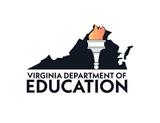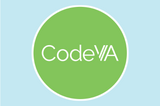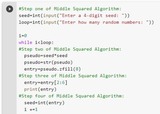
Lesson to support the Computer Science Standards of Learning
- Subject:
- Computer Science
- Mathematics
- Material Type:
- Lesson Plan
- Author:
- Keisha Tennessee
- Date Added:
- 09/23/2021

Lesson to support the Computer Science Standards of Learning

After reviewing tips for following instructions, students will use plane figures to create a mystery image using their teacher's algorithm. Unfortunately, the teacher's directions are not very precise. Students will lend a hand by giving detailed feedback to debug and clarify the set of ordered instructions to successfully build a snowman.

Students will sequence a story by connecting images from the beginning, middle, and end of the story on a grid board and write the algorithm to connect them in order. The arrows used to connect the beginning, middle, and end will construct an algorithm. Students will test their algorithm and debug if there are errors.These materials were created by CodeVA in partnership with George Mason University and were funded by the National Science Foundation under Grant Award #1837380

Concepts: Algorithms, Time Lines, Sequence of Events, Cause and EffectTerms: Sequence, AlgorithmMaterials: Paper, Pencil, List of Important Dates and EventsLesson Delivery: This lesson can be used as an ongoing project, or a review lesson for Historical Events.The learner will create a timeline that lists historical events and dates in US or Virginia History. Timeline_Algorithm.pdf

What is Random? Through this project, students will discover what makes an outcome random. Emphasis will be placed on the difference between deterministic and nondeterministic outcomes. The project starts out with a discovery activity where students will see the difference between creating data with a coin toss where they just make up the data and creating data through actually tossing a coin.Students will end the project by studying pseudorandom number generators, specifically the Middle Squared Algorithm. They will even create a program that uses this algorithm. Enjoy!

In this lesson, you will introduce the CS topic of Sequencing to students with an engaging hook, a Use-Modify-Create activity, and a coding challenge in code.org's Artist studio. This was taught virtually, but can easily be adapted for a face-to-face classroom.

Co-authored with Kaitlin Read and Udaya DatlaCan you remember a time you've been sick? Why aren't you still sick? How did you get better?Join Udaya Sree Datla, a doctoral student in translational biology, medicine, and health at Virginia Tech, as she presents Infections, Germs, and Immune Cells. The accompanying lessons and resources provide students with an introduction to germs, the immune system, and the career path of an immunologist, all while emphasizing the importance of handwashing and incorporating a computer science twist. The second lesson capitalizes on an opportunity to integrate computer science by introducing students to the career path of computer programming and constructing a set of step-by-step instructions (algorithms) either independently or collaboratively to sequence the steps of handwashing. These resources are part of the Advancing Computer Science Education Grant to support the implementation of Virginia's Computer Science Standards of Learning in partnership with Floyd County Public Schools with additional support from Virginia Tech's Center for Communicating Science and the Institute for Creativity, Arts, and Technology.